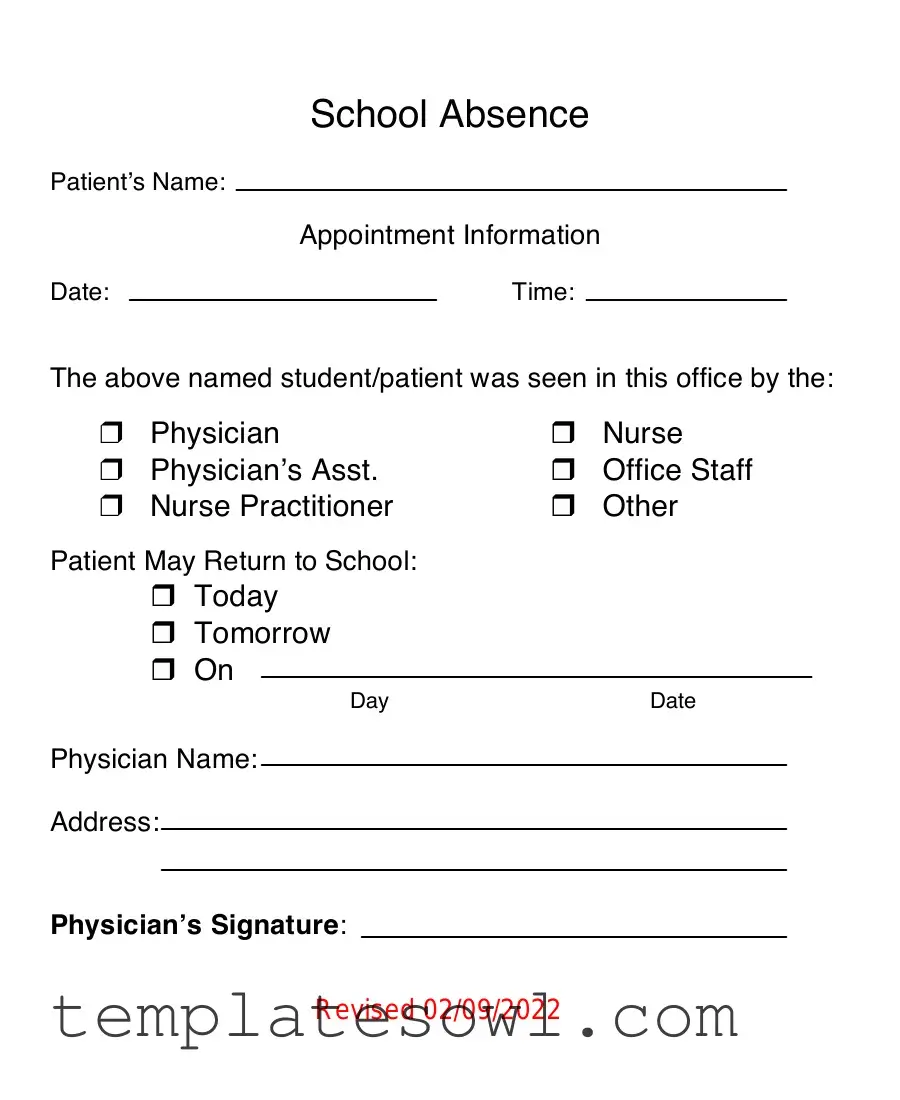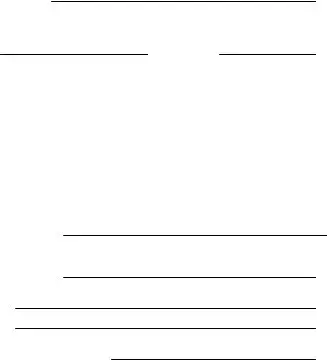What is the purpose of the School Absence form?
The School Absence form is used to notify the school about a student’s absence due to a medical appointment or illness. It helps ensure that schools keep accurate attendance records and gives students the necessary clearance to return to school.
Who fills out the School Absence form?
The form is typically filled out by a healthcare professional who has seen the student, such as a physician, nurse, or nurse practitioner. This professionals signs the form to verify the student's visit and to indicate when they may return to school.
What information is required on the School Absence form?
The form requires the patient's name, the date and time of the appointment, the name of the healthcare provider, their address, and the provider's signature. It also indicates when the student may return to school, either that day, the following day, or on a specified date.
Can a parent or guardian fill out the form?
No, the form must be completed by a healthcare professional. Their signature and details are crucial for validating the absence and providing assurance to the school of the student's medical visitation.
When should I submit the School Absence form?
The form should be submitted as soon as possible after the healthcare appointment. Providing it promptly helps ensure that the student is marked appropriately in attendance records and can return to school without issue.
Is there a specific format for the School Absence form?
While the specific format may vary by school, the essential components listed on the form should be included. The form should clearly present the absence details and be signed by the healthcare provider to be considered valid.
What if my child has multiple absences?
If your child has several medical appointments or absences, separate forms may be required for each instance. It’s best to check with the school for their specific policy on handling multiple absences.
What happens if I don't submit the form?
If the School Absence form is not submitted, the absence might be recorded as unexcused. This can have implications on attendance records and may require further action, such as additional documentation or meetings with school officials.
Where can I obtain a School Absence form?
The School Absence form can usually be obtained from the school’s administrative office or website. Some healthcare providers may also have their own versions of the form that meets school requirements.

